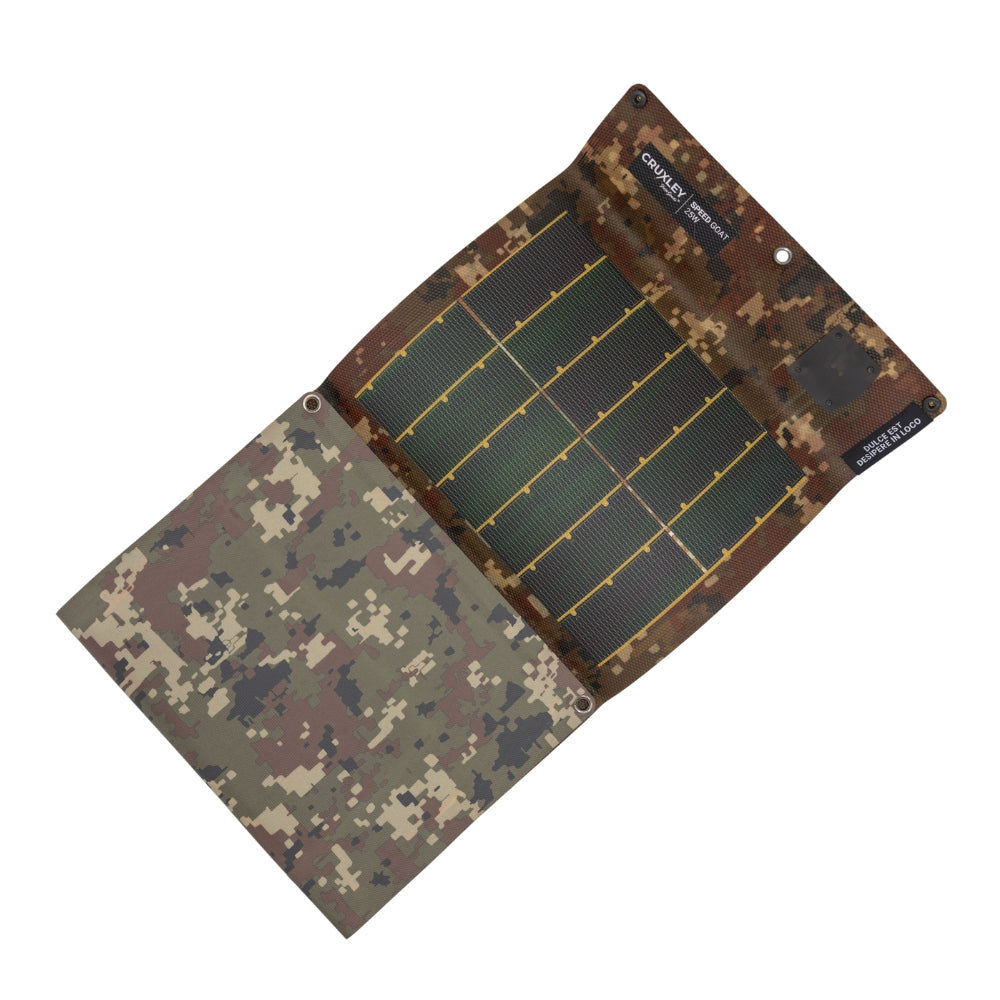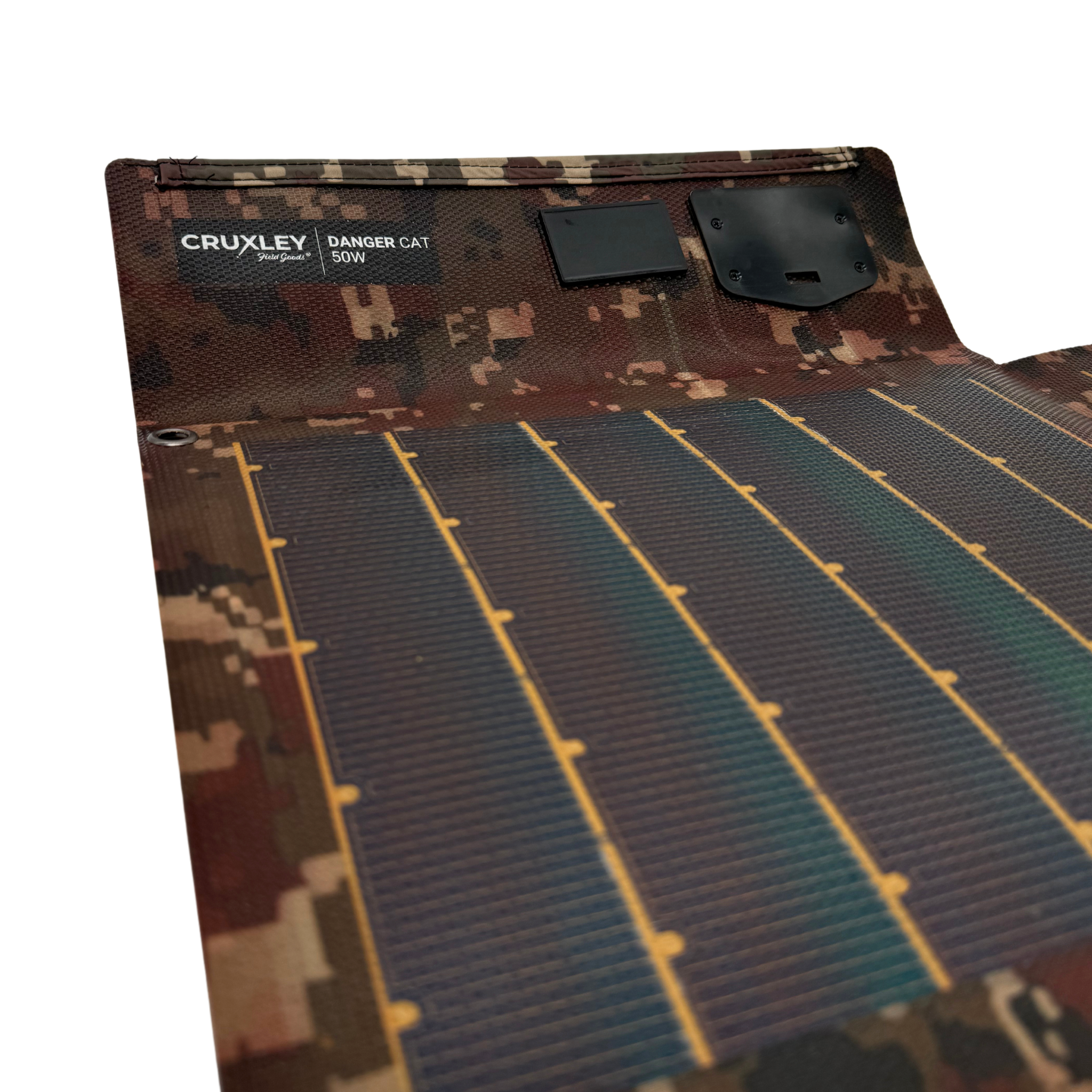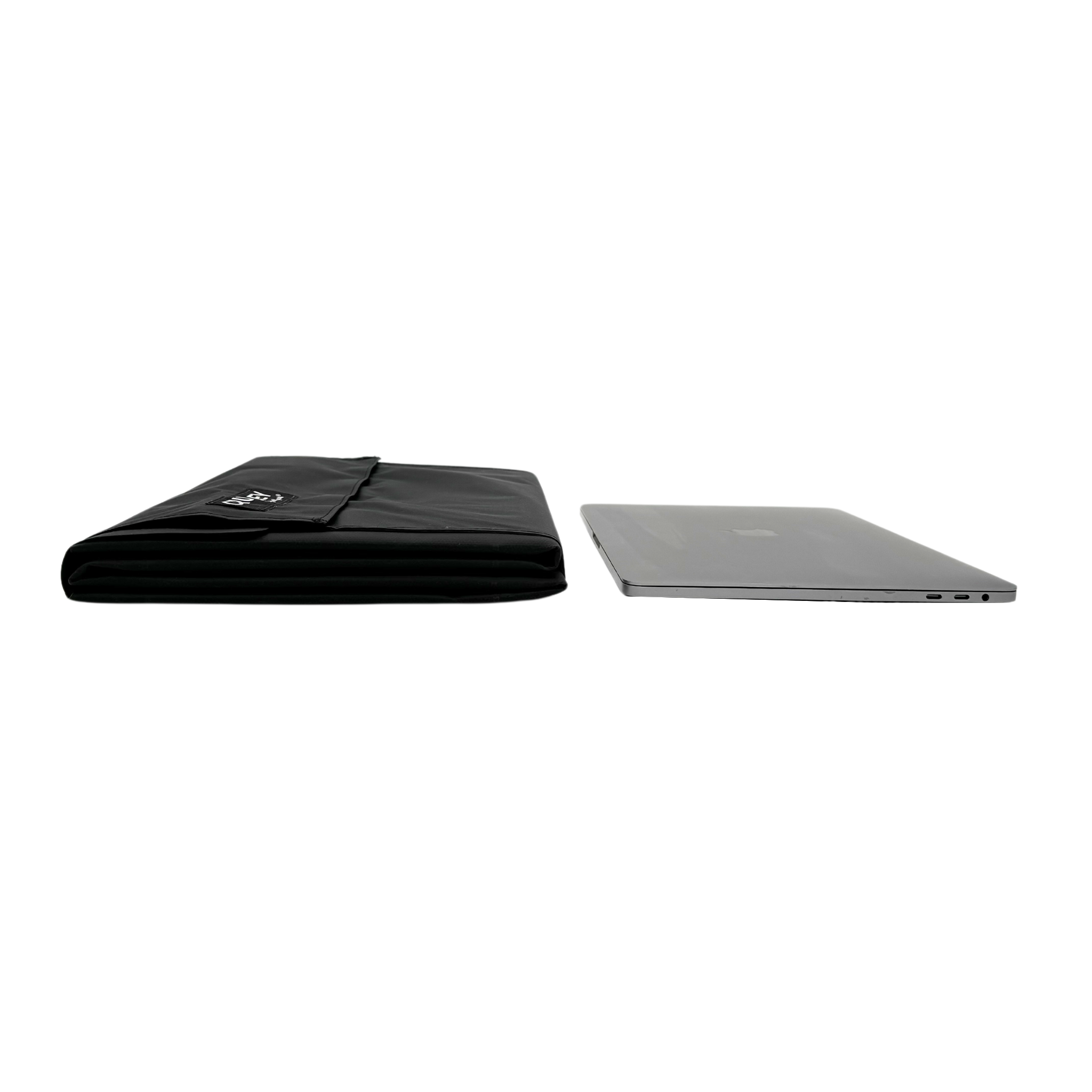
What everyone else is asking.
FAQS
Have more questions than what's listed here?
It depends…but here’s a brief framework for figuring it out.
All electronics have a battery capacity that should be listed on the device or packaging. This capacity will be listed as either watt hours (Wh) or milliamp hours (mAh). For instance, most newer iPhone have a
battery capacity of 10-15 Wh (we’ll use Wh for reasons that will become obvious shortly). A watt hour is—you guessed it—a unit representing a charge of one watt for one hour. So, to fully charge a 15 Wh battery you’d need 15W of solar power going to your device for one hour. Pretty simple, right?
Unfortunately there’s a lot of caveats to remote solar charging that start with the way that solar panels are rated. All solar panels are rated under Standard Test Conditions of 1,000W per square meter or solar
irradiance…which as far as we can tell only exist at noon, on the equator on a perfectly clear day. While this is convenient for comparing panels to one another it’s not great for determining the actual wattage you’re going to get in the real world on any given day. Even on a clear summer day you’re going to have
a reduction in irradiance (sunlight) from pollution, sun angle, haze,
particulate, etc. Furthermore, temperature, the device's input capacity and a myriad of other factors play a role in how long it will take to charge a device.
Over years of research and testing we’ve come up with the rule of thumb that most solar panels will produce around 80% of their rating in real world conditions. Not sure why the solar industry has chosen this
approach, it’d be like buying a car and realizing it only gets 80% of the fuel efficiency that’s claimed. Bummer.
Our most straightforward advice: get a panel that will produce more power than you need. Your devices will charge faster, it’s easier to take advantage of times of limited sunlight and you don’t have to be as
concerned repositioning a panel in accordance to what the sun’s doing.
It depends…by the fabric definition of waterproof, yes. By the electronics definition, no. While the panel itself is sealed, coated and can handle precipitation in all forms, the USB ports and solar controller unit can be susceptible to water damage. It’s best to avoid prolonged exposure to moisture or submerging the panel in any way (in case you were thinking about it).
While we comply with industry standards of rating our panels based on Standard Testing Conditions, we also provide an in real life rating because we believe in transparency and honesty. IRL ratings provide a realistic expectation of the power that will be generated in remote solar charging conditions.
Yes, but output will be reduced. During times of intermittent clouds we highly recommend charging a battery bank rather than the device directly to prevent a device from going from charging to not charging frequently. Most devices need around 5V to trigger charging. That is, they won’t trickle charge on lower voltage/amperage like some battery banks will. Not only is cycling from charging/not charging bad for your devices battery, it can actually drain the battery rather than charge it.
We do not recommend charging a computer while in use directly off of USB-C due to a computer’s fluctuating power consumption and the solar panels fluctuating power production. We highly recommend using an external battery bank as an intermediary which will provide the computer (or other device) with consistent power while the solar power recharges the battery bank.
We choose SAE output for its durability and versatility, however we understand not everyone may be familiar with it. If needed, we'd be happy to include the appropriate connecting cable for your device if you let us know what device you'll be charging. Some common connection types are:
SAE to 8mm barrel connector
SAE to Anderson Power Pole
SAE to DC 5521
Why are knives more ideal than firearms in a zombie apocalypse? Knives don’t need reloading. Armageddon jokes aside, we love power banks but a power bank is dead weight (pun intended) once it runs out of juice…or if you forget to charge it. At best this is an inconvenience (no campfire tunes, drats!), at worst this can be quite dire (an emergency with a dead inReach or phone). Of course we’re in the business of selling solar panels, but were also in the business of giving you the confidence for that worst case scenario.
Our panels perform best with battery banks with dedicated DC input ports such as an 8mm barrel plugs, Anderson Power Pole connectors, or DC 5521 connectors. These connections allow you to maximize solar panel output via the SAE connection. Of course, the panels are compatible with power banks with USB inputs, however, charging times may be slower due to limitations on input on such devices. For reference, the above DC input methods can actually charge a battery bank faster than a home wall outlet typically does, while USB charging will be equal to or more than charging times at home.
Our panels have and open circuit voltage (Voc) of 18 volts, 12V at the SAE connection and 5V at USB ports.
Yes, linking panels will provide a greater charge to a single battery bank just make sure you do not exceed any limitations on that device.
Of course. Happy to consult and offer suggestions based on your power needs, however big or small. We can even build a system, test it and ship it for larger scale productions. Drop us a line here.



